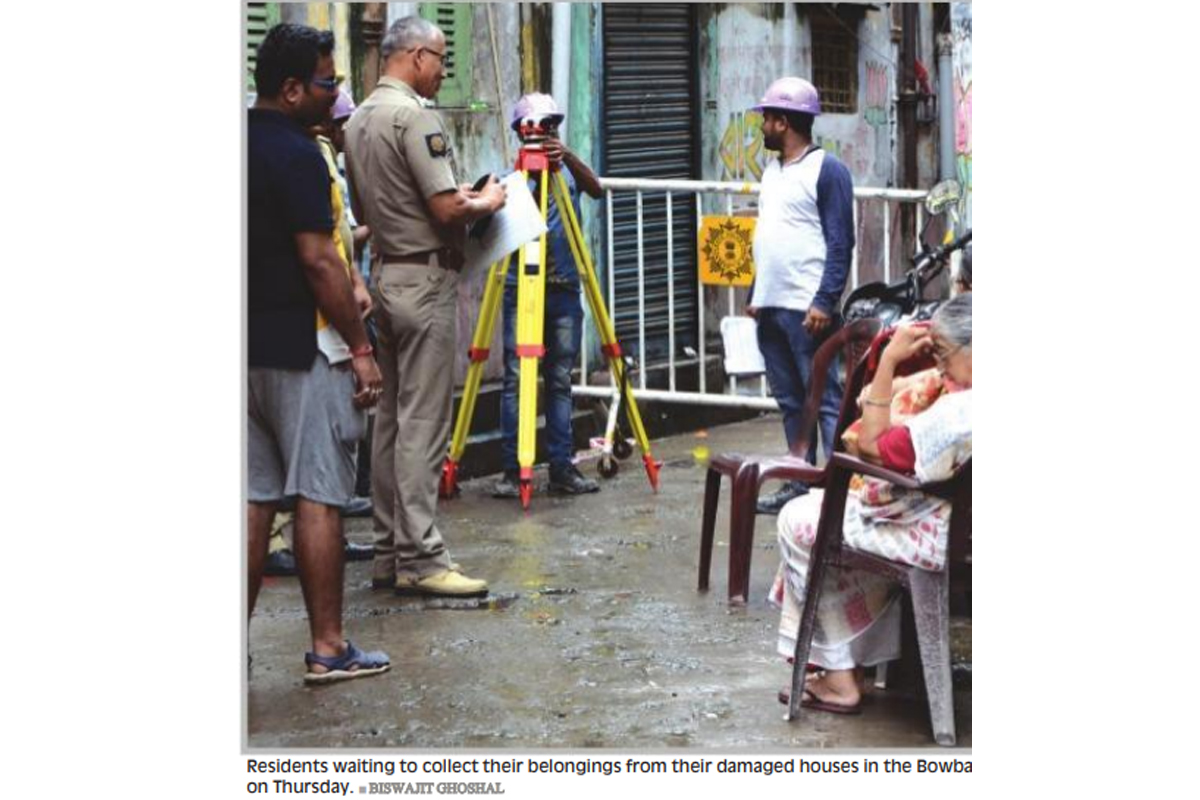Howrah subway joining rail and Metro stn to start around Durga Puja
The subway is being targeted for completion around Durga Puja.
Survey conducted to find out if structures affected due to tunneling.

Photo: SNS
With new cracks and crevices developing every passing day, one of the uphill tasks that the engineers of Kolkata Metro Rail Corporation (KMRCL), at present have, is to differentiate between the existing cracks in the old building, some which are a century-old, and the new ones that have been caused due to tunnelling in the area.
The KMRCL had conducted a building survey of structures that could have been affected due to tunnelling. The survey by the experts included buildings that fell within 20 metres on either side of the route of the tunnel boring machine.
The expectations and probabilities were badly affected after 1 September, when the tunnel boring machine Chandi hit an aquifer leading to water ingress which further resulted in subsidence of the ground, around 700 metres away from its target destination at Sealdah Station. Around 78 buildings felt the impact of the subsidence, of which 19 have been damaged beyond repair. The remaining 59 either need minor repairs or major structural changes.
Advertisement
Given that the affected stretch accommodated a large number of old and precarious structures, some which already had pre-existing cracks, one of the main challenges before the KMRCL authorities, is to differentiate between the cracks that already existed and the ones that have developed after the subsidence. While the original survey had covered a stretch of 20 metres width on either side of the TBM route, the impact of the subsidence has spread to around 57 metres in width and around 100 metres in length. This has brought fresh challenges before the KMRCL authorities in identifying the new cracks that have appeared due to the ground loss with epicentre at Durga Pithuri Lane.
“Differentiating between the cracks is a difficult task. But the data gathered from building survey and structural impact study by experts and general consultants done before starting the tunnelling, will be of some help to us. From these surveys, we do have an initial idea of the buildings that were already in bad condition before the tunnelling started,” said a senior KMRCL official.
The most challenging stretch in the affected area is said to be Gour Dey Lane, which houses a pocket of slums along with residential buildings and workshops of goldsmiths. Some of the houses in the slum area already had cracks and crevices, according to residents of the area. The residents of those houses, some of whom are occupiers or tenants, have not even paid their rent for months. They either continued living in those precarious structures or had recently shifted to alternate accommodations. After the mishap, several such residents are said to have come back, putting in claims not only for the repair of the structures but also the compensation amount of five lakh rupees.
The KMRCL authorities expressed their helplessness, having no option than to repair those structures, resulting in cost escalations. “Despite the fact that there were existing cracks in some of the buildings, we are left with no option than to repair all the structures that fall under the affected stretch,” said the official.
Advertisement